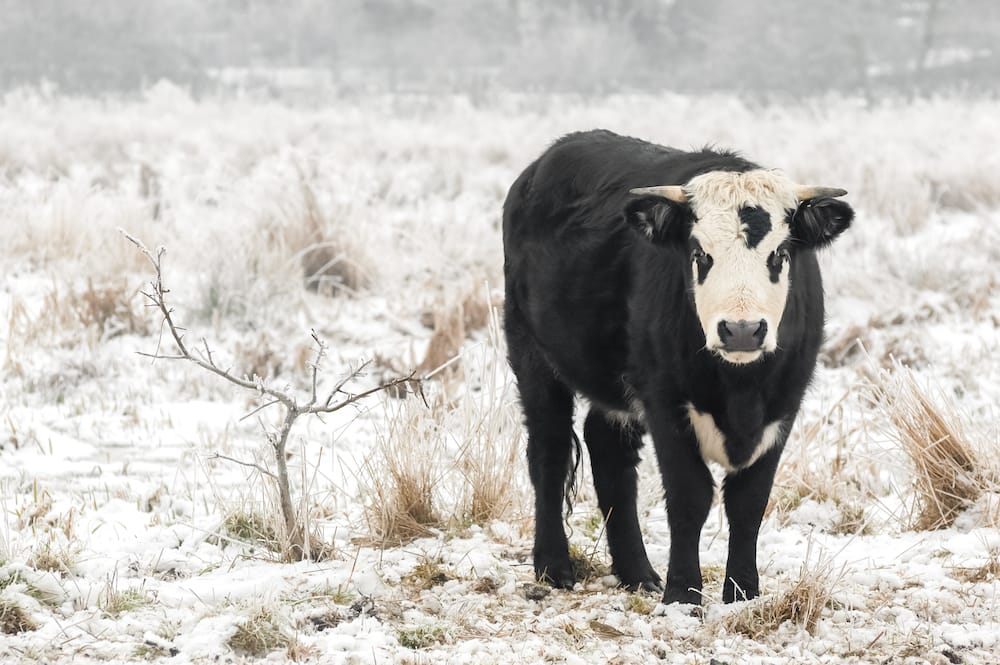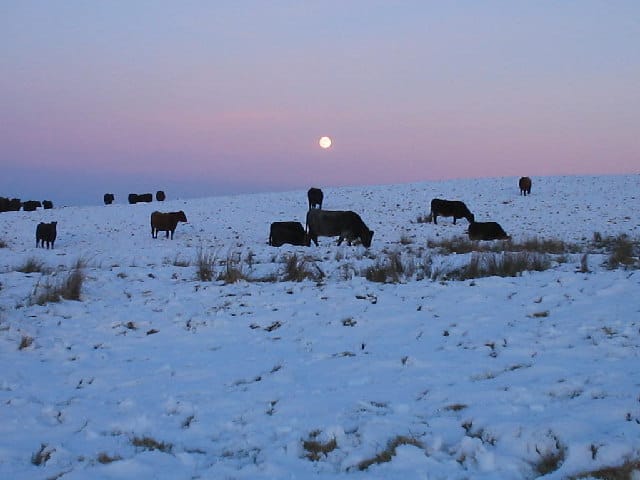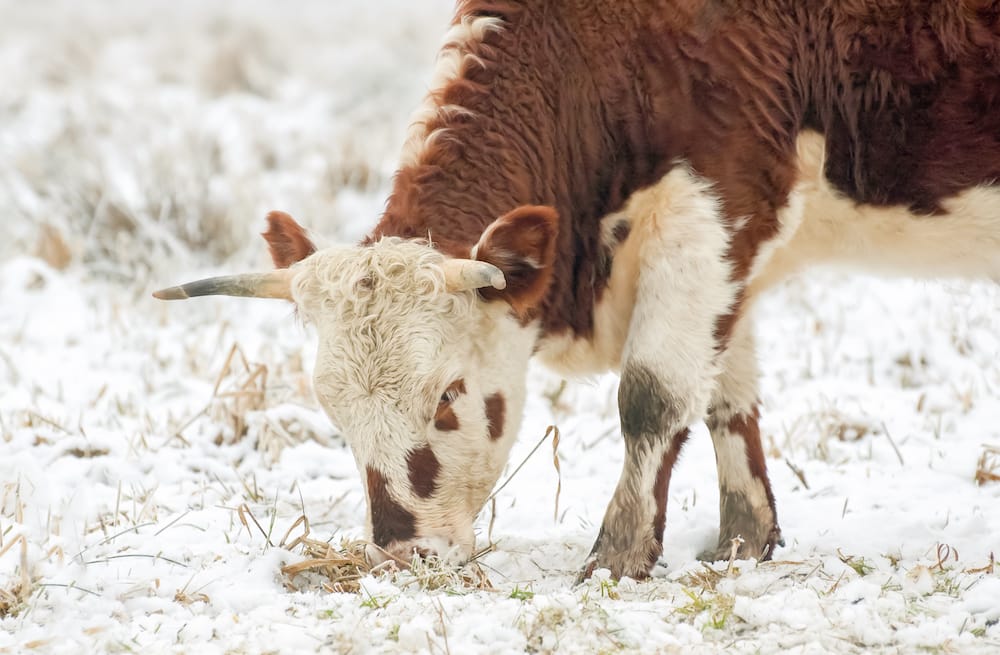You know that cattle feed is the most expensive part about raising dairy cows and beef cattle.
Offering your cows fresh and natural pasture is definitely much cheaper than feeding them with expensive ration.
The key to cutting your costs is to learn the tricks of keeping cattle on the pasture for as long as you possibly can, thereby cutting down on expensive cattle feed.
Whether you’re a dairy farmer or a cow-calf producer, we’ll talk about the best way to prepare both your pastures and your cattle for a long and fruitful relationship!
Your pastures have to be high-quality in winter too.
If there’s a sudden change in the quality of pasture, milk production drops until the cows, and their rumen microbes become adapted to the changed quality. These rumen microbes are super sensitive to changes. Once they become adapted to lower-quality forage, it’s difficult to bring them back and make more milk with the higher-quality forage.

Today, it’s become common practice for farmers to practice winter grazing. Fit cows are easily able to graze through even a foot of snow. The main challenge here is to gauge the amount of forage available in pastures that are covered up with snow.
Here are three quick tips to prep your pastures for winter grazing:
- During the growing season, use daily pasture rotation so that your pasture remains lush and full of nutrients before the onset of winter.
- During the middle of summer, maximise the height of your pastures so that you have tall pastures that will stand tall through the snow. By the end of the growing season, your pastures should have reached their maximum growth levels, but only a few seed heads should appear among the grass.
- Don’t touch your winter pastures in the fall. Instead, use up all the short regrowth your pastures and fields which will anyway be crushed by the first snowfall that occurs. This way, your tall pastures are preserved for when the snow begins to pile up.
Winter pastures must be high in nutrients, have good taste and texture, should be resistant to leaching, should stand tall above the snow and be easy to find too.

Now let’s talk about what you can do for your cows to turn them into snow-loving animals!
Body Fat:
A nice plush layer of body fat is the secret to a great winter grazing season! This body fat is what your cattle can store in their bodies during summer, which will help them get through the winter months easily.
The amount of milk a cow can produce is directly related to how much food she eats.
If the quality of the pasture’s not great, the quality of the milk isn’t going to be great. Even one week of low-quality pastures could make a cow tap into her own reserves to maintain milk production. Then the cow gets thin, which results in a long post-partum anoestrus, which means it’s going to be a while until the cow has her next calf.
It’s simple really. Get your cattle fat in summer, and then let them lose their body fat in winter!
Don’t confuse weight with body fat:
We told you that your cattle can lose body fat during winter and still power through the snowy season. But don’t confuse body fat with weight.
The weight of mature cattle will fluctuate by approximately 180 lbs between a BCS of 5 – 7. When this happens, it means that your cattle are losing body fat, without their bone and muscle growth being affected. Which is good news!
There’s also another amazing benefit to this body fat loss. Reduced body fat in winter ensures that your heifer calves and bull calves develop their sexual organs without fat cells. And this reduced amount of fat cells can improve fertility rates. So:
- Conception rates are higher.
- Replacements costs are lower.
- Offsprings are likely to gain more weight in spring and summer.
What is compensatory gain?
Just like every other animal, your cows’ metabolisms slow down when their calorie-intake is lower. Once this happens, it takes a good amount of time for the metabolisms to speed up. So, when they’re fed with increased calories post-winter, their still-slow metabolism helps them to easily put on weight. This is what is called compensatory gain!
Forage Analysis:
Note how your pasture quality changes every month. And then, take that data to a livestock nutritionist who will help you zero in on exactly what supplements your cows need to maintain good BCS scores.
With all the data on your pasture quality, your nutritionist will be able to recommend supplements that will determine how your cattle’s reserve fat will be used up so that they don’t go below a BCS level of 5 during winter.
Your dairy cows should have a DM intake of at least 2.5% of body weight per day.
Choosing breeds:
Choose the right breeds of cattle that will be able to withstand all sorts of climates and unique conditions on your farm is important. Beef cattle farmers should consider the following:
- The age at which your cattle will be slaughtered
- Weight at the time of slaughter
- Climate and farm factors
- Your marketing strategy
- Goals at the end of the finishing season
Study your cattle’s history and how easily it can adapt to climatic conditions before you choose them for your farm.
Now that we’ve covered all the main points to help your cattle thrive in your pastures let’s talk about the future. The cows that you pick for breeding who will invariably decide the future of your farm.

Genetic selection:
Genetic selection can be divided into two parts:
- Your choice of breed
- The cattle you choose from the breed for grazing
Like we mentioned before, your choice of the breed will make sure that you are choosing the best breed for your farm’s unique personality.
In addition to Holstein-Friesian, Jersey and crossbreeds, some breeds like Galloway and Scotch Highland adapt better to cold climates.
In contrast, other breeds like Brahman, Brangus, Senepol and a few others do much better in hot climates and not so well in the cold. Angus cattle are known for their excellent meat quality, and Herefords are popular for feed efficiency. Simmental, Chianina and other continental breeds are good for higher weaning weight in calves.
Second, comes picking the most fertile cows from within the breed. A good eye for picking the most fertile, unfussy, low-maintenance cows in order to up your conception rates, extend your grazing season well into winter to cut your costs and maximise profits.
Selecting your cows for breeding entails two important steps:
Select the breeding stock that displays good characteristics that in turn indicate high fertility and low maintenance
Use the 42-day breeding program we spoke about earlier to weed out your low-performing cows. There are three instances in which you should cull your cows:
- If they are unable to conceive during the 42-day breeding season
- If they’re unable to calve without assistance
- If they’re unable to produce a good-quality calf at the weaning date
It all boils down to picking the best cows, understanding their unique capabilities and then aligning them with the overall goals of your farm. If this is done as an exact science, it will poise your pastures for amazing profits and prosperity with grazing management!
Whether you’re rearing beef cattle or dairy cows on winter pastures, the basics are pretty much the same.
You need to make sure your cows have adequate body fat through the winter and DM intake every day, choose the right breeds that can adapt to the chilly season and of course, high-nutrient pastures that are easily accessible despite the snow and will keep your cows nice & chubby as well as help in the production of high-quality milk!
Hope you enjoyed this article. Please feel free to comment below and check out what we're doing for you at Pasture.io.
Until we meet again, Happy Farming!
- The Dedicated Team of Pasture.io, 2020-09-25